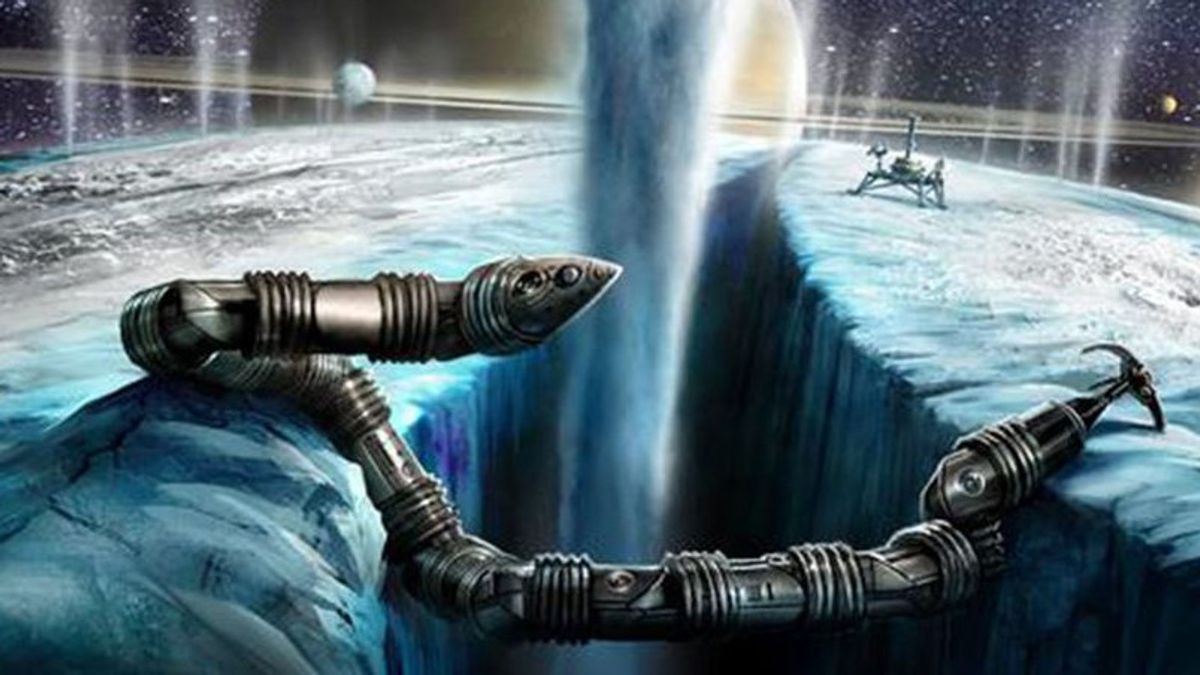JAKARTA - A snake-like robot is being developed by NASA to research and search for foreign life in the month of Enceladus on Planet Saturn.
Called EELS (Exobiology Extant Life Surveyor), this self-moving autonomous robot is inspired by the desire to search for signs of life in oceans hiding under the ice crust of the month of Enceladus.
The robot created by NASA's Jet Propulsion Laboratory (JPL) researcher can descend a narrow vent on the surface that vomits a bubble into space.
EELS can choose a safe path through a variety of terrains on Earth, the Moon, and far outside, including wavy sand and ice, cliff walls, craters that are too steep for explorers, underground lava cylinders, as well asatory spaces inside glaciers.
"This (EELS) has the ability to go to a location where other robots cannot go. Although some robots are better off on one particular type of terrain or another, the idea for EELS is the ability to do everything," said EELS Project Manager of NASA's JPL, Matthew Robinson, in a statement quoted Friday, May 12.
When you go to places where you don't know what you're going to find, you want to send a versatile robot that is aware of risks that are ready to face uncertainty and can make decisions on its own," he added.
Due to the time lag of communication between Earth and outer space, EELS is designed to feel its environment independently, calculate risks, travel, and collect data with undetermined science instruments. When something goes wrong, the goal is for the robot to recover by itself, without human assistance.
Furthermore, EELS created a 3D map around it using four pairs of stereo and lidar cameras, which are similar to radar but use short laser pulses, not radio waves.
With the data from the sensor, the navigation algorithm determines the safest path forward. The goal is to create a library of gigs, or how robots can move in response to the challenge of the terrain, from side to side curling up on their own, a movement the researchers call bananas.
In the end, the robot will contain 48 actuators, namely a small motor that provides flexibility to take some configurations. Working like a skin type, EELS can feel how much strength it exerts on the terrain.
It helps it move vertically in a narrow channel with uneven surfaces, configing itself to push the opposite walls at the same time as rock climbers.
For information, the research team started building the first prototype in 2019 and continues to make revisions. Since last year, they have conducted monthly field tests and refined the hardware and software that allows EELS to operate independently.
In its current form, dubbed EELS 1, 1, the robot weighs about 220 pounds (100 kilograms) and is 13 feet (4 meters) long. It consists of 10 identical segments that rotate, using screw ulir for drive, traction, and grip.
NASA's JPL researchers have tried various kinds of screws, namely a 3D-printed plastic screw 8 inches in diameter (20 centimeters) white for testing on looser terrain, and a narrower and sharper black metal screw for ice.
Robots have been tested in sandy, snowy, and cold environments, from Mars Yard on JPL to robotic playgrounds built on ski resorts in California's snowy mountains, even in the local indoor ice arena. Unfortunately, the launch date has not been announced, but is expected to be skyrocketed by the end of next year.
The English, Chinese, Japanese, Arabic, and French versions are automatically generated by the AI. So there may still be inaccuracies in translating, please always see Indonesian as our main language. (system supported by DigitalSiber.id)













